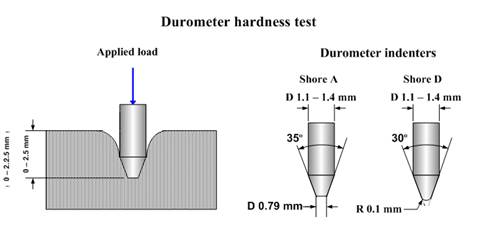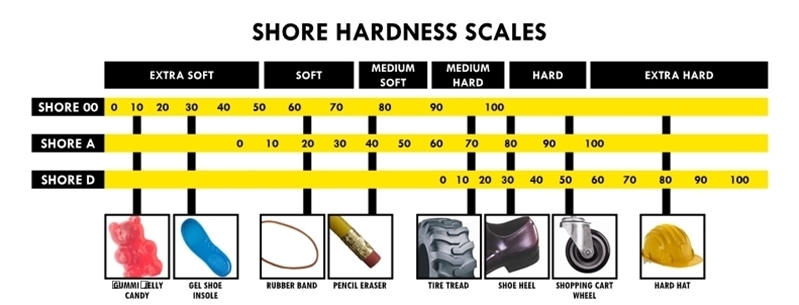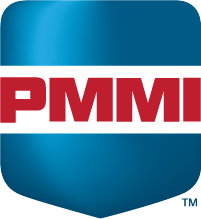Editor’s note: This post was originally published on OMNI in 2019 and has been updated to reflect the latest information.
Have you ever worked on a design and thought that any rigid or soft material would be a good option, only to discover that the material selected underperforms in the finished state? I’ve seen this many times in my career.
Proper material selection is critical in achieving the desired end result. There are multiple things that need to be considered in selecting the proper material for any given application:
- How hard or soft does the material need to be?
What is the durometer? - How much does the end component need to flex?
What modulus should we target? - Are there any harsh environmental considerations?
Heat, corrosive chemicals, etc.?
All of these are questions that help provide our customers with a component that will perform at a high level. The one I am going to touch on specifically is durometer. What is durometer? And how does durometer impact performance?

What is Durometer?
Durometer in its simplest form is the measure of the hardness of materials. Durometer hardness is measured using special gauges for specific hardness tests in the shore durometer scale system. In OMNI’s case, we are specifically referring to elastomers.
Shore 00 Scale
The Shore 00 Hardness Scale measures softer materials such as rubbers and gels. This might be used to measure soft rubbers such as gummy bears, rubber bands, or different types of silicone.
Shore A Scale
This shore hardness scale measures the hardness of flexible mold rubber materials that range in hardness from very soft and flexible, to medium and somewhat flexible, to hard with almost no flexibility at all.
Shore D Scale
The Shore D Scale measures harder materials such as hard elastomers, semi-rigid plastics, and hard plastics. This hardness measurement is used for bowling balls, hard hats, etc.
What is the difference between Shore A and Shore D Durometer Testing Methods?
The main difference between Shore A and Shore D durometer scales is that Shore A is used to measure more flexible rubbers while Shore D is specified for harder and rigid materials. Though, ranges do overlap at higher Shore A levels. Higher numbers on the scale correspond with a harder material, whereas lower numbers represent a lower measure of hardness.
Another difference is the process by which products are tested. Materials are tested by bringing a blunt (Shore A) or pointed (Shore D) probe into the material at a specific load rating. The further the probe is depressed and creates an indentation, the harder the material is.

Choosing the Correct Durometer Method
Durometer plays a big part in the resiliency of the material. Suppose you are looking for a material that needs to grip a product but needs to withstand sliding abrasion. In that case, you will find that materials harder in the Shore A scale will be better with abrasion resistance while maintaining grip. If you are looking to decrease COF, then materials in the Shore D scale will provide you with less drag.
Polyurethane makes for an excellent material for a variety of reasons, one being that the durometer range in this polymer group covers the gamut. Although at OMNI we have the ability to manufacture parts in any durometer, physical properties are maximized between 50A and 80D. When you get too much higher on the Shore D scale, the materials start to become brittle. Likewise, on the Shore A scale materials cut, tear, and rebound resilience are compromised.
OMNI Technologies’ Custom Molded Plastic Parts
When OMNI looks at applications with our customers, we first look to understand the dynamics that will be placed on the material. From there we can start looking at the modulus required and formulate materials in the right durometer range that would give us optimal physical properties.
Our goal at OMNI is to develop long-lasting products that perform just like you designed them to. We have the design knowledge to produce the highest quality product with superior functionality and performance. We are ready to collaborate with you to identify the best solution – from design and material selection to execution and delivery. Let’s discuss your custom polyurethane part today.






